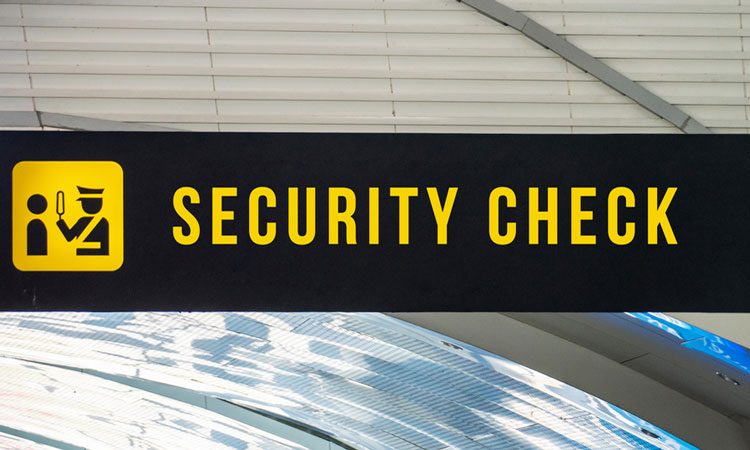UK to boost funding for aviation security innovation
- Like
- Digg
- Del
- Tumblr
- VKontakte
- Buffer
- Love This
- Odnoklassniki
- Meneame
- Blogger
- Amazon
- Yahoo Mail
- Gmail
- AOL
- Newsvine
- HackerNews
- Evernote
- MySpace
- Mail.ru
- Viadeo
- Line
- Comments
- Yummly
- SMS
- Viber
- Telegram
- Subscribe
- Skype
- Facebook Messenger
- Kakao
- LiveJournal
- Yammer
- Edgar
- Fintel
- Mix
- Instapaper
- Copy Link
Posted: 5 April 2019 | International Airport Review | No comments yet
The UK Department for Transport has launched a new scheme where up to £1 million will be available to industry and academic experts with enterprising ideas for improving aviation security.


The Defence and Security Accelerator (DASA) is making more funding available for innovations that enhance aviation security measures, courtesy of the Future Aviation Security Solutions (FASS) programme.
FASS – a joint initiative between the Department for Transport (DfT) and Home Office which was set up to improve aviation security by funding and supporting the development of innovative science and technology solutions – will provide up to £1 million for innovative solutions that can boost the screening of passengers and cargo at airports.
This substantial funding will build on existing aviation threat detection capabilities by encouraging industry and academia to come up with novel ideas that reinforce screening processes at UK and international airports.
Cutting-edge science and technology developed with this funding could mean passengers see shorter queues and experience faster screening while benefiting from more effective security measures.
Security Minister, Ben Wallace, said: “Ensuring that the UK is a world leader in aviation security is a key objective of the government’s counter-terrorism strategy, CONTEST. This is another example of bringing together government, industry and experts to ensure that the UK remains on the front foot and a global leader in the development of technologies that keep the public safe. I look forward to seeing new ideas which improve security and make for a better experience at airports for passengers.”
This funding will be made available to experts from industry and academia through DASA’s Open Call for Innovation focus areas – many of which focus exclusively on aviation. Alongside ideas that could improve the airport screening process for passengers, DASA is also seeking novel proposals that can boost the screening of aviation cargo.
Around 80 per cent of air cargo is carried on passenger aircraft so it is important that it is robustly screened to ensure that prohibited items are not part of flown cargo. Identifying and investing in the latest screening solutions will help keep passengers – and those who work at airports – safe and secure.
DASA is requesting proposals from industry and academia through its Open Call for Innovation focus areas as follows:
Finding suspected threats on passengers during airport screening
Once a metal detector or security scanner alarm is activated on a passenger, the passenger is subjected to a further search in order to resolve the alarm and determine whether the alarm is genuine.
Currently this is carried out by combining the use of hand searches, handheld metal detectors and explosive trace detectors. Hand searches, particularly when performed on certain areas of the body, can be intrusive for the passenger and uncomfortable for the security officer conducting the search.
The DfT are interested in receiving proposals for the development of hand-held solutions that will help detect both metallic and non-metallic threats on the body while reducing the need for person-person contact, particularly in harder-to-search areas of the body.
Matching passengers with their x-ray trays during airport screening
Airport screening requires passengers to put their items into trays which are then passed through x-ray machines. Passengers may require multiple x-ray trays when they have a large number of personal effects. This can lead to trays becoming separated from one another and from the relevant passenger. Therefore, we are seeking a novel solution which is able to:
- Link each passenger to all of their x-ray trays, until all items have been screened and retrieved by the passenger record each tray’s outcome (clear or divert) for auditing purposes
- Integrate with the x-ray system for specific screening of each tray, as a further capability.
The DfT are looking for innovative solutions to ensure airport passengers are correctly linked to the x-ray trays they are using to put their personal effects through scanners.
Improving aviation cargo screening speed
Aviation cargo screening can be a laborious process that takes a significant amount of time. Cargo can be either distributed on pallets or in large containers. Currently, aviation cargo is screened for threat items by a variety of methods including x-ray systems. Cargo often has regions of high density, and other complexities such as size and shape which require further investigation. Secondary screening involves manual screening and other detection methods such as metal detection, canine screening and explosive trace detection.
The DfT are looking for novel ideas that would help increase the speed, accuracy and volume at which cargo is screened.
Related topics
Aeronautical revenue, Funding and finance, Regulation and Legislation, Security

















